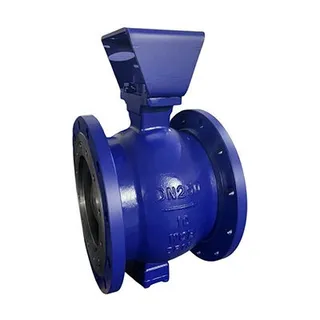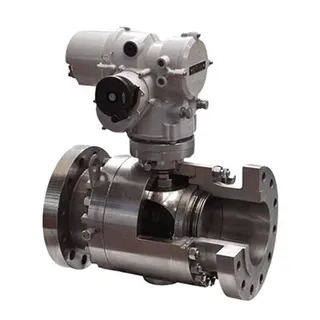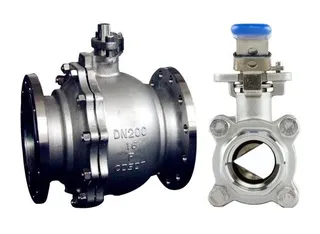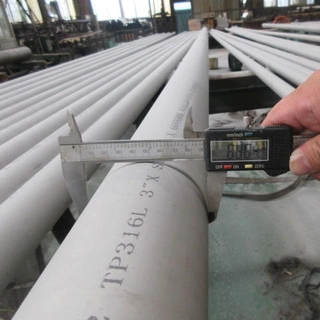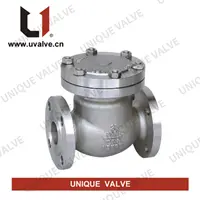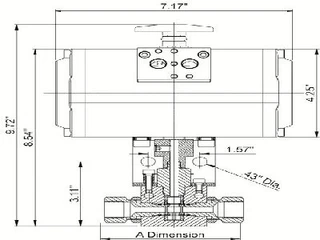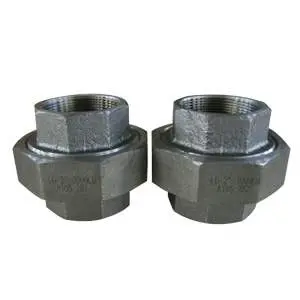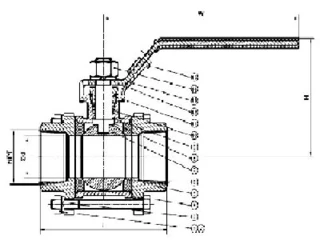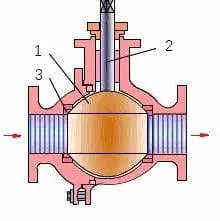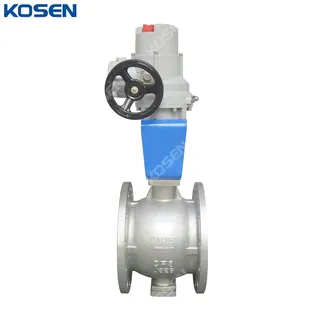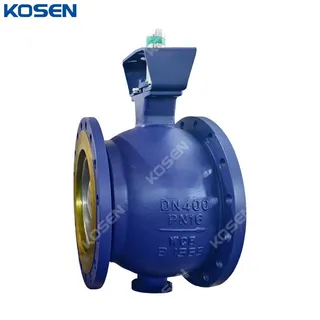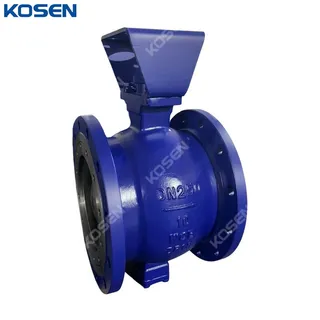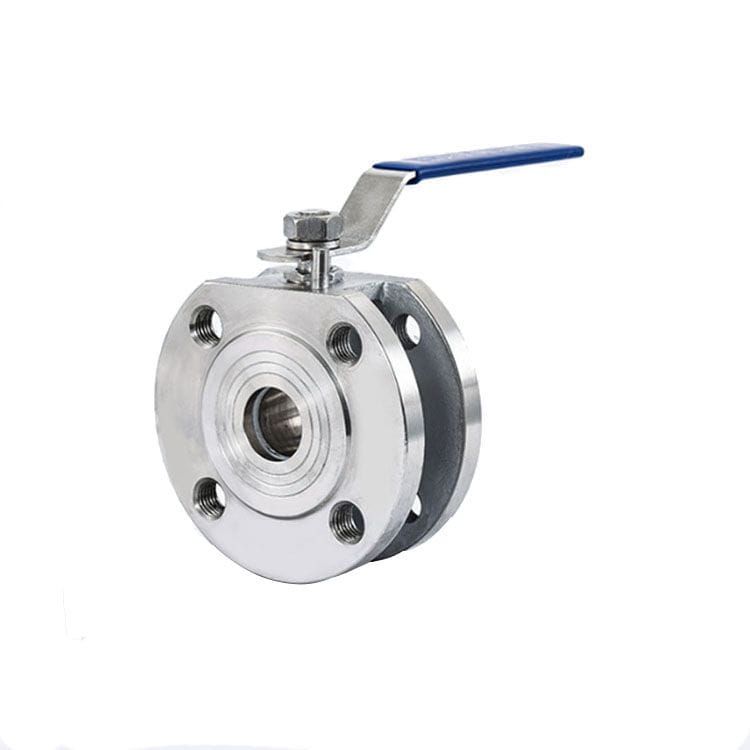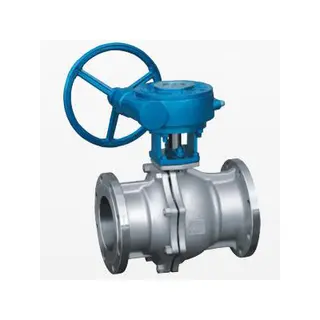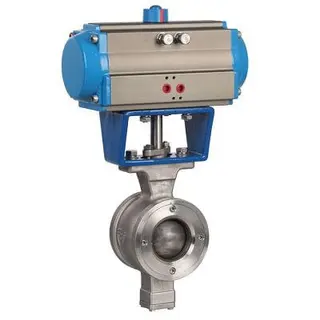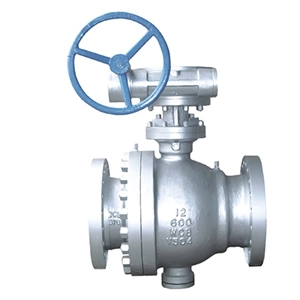Features and Installation of V-type ball valve
A V-shaped ball valve is a type of rotary ball valve equipped with a metal core seat or a metal-to-Teflon sealing, merging the control characteristics of both ball and butterfly valves. This versatile valve can function as both a control valve and a shut-off valve, making it suitable for a variety of fluid regulation applications, especially in systems with impurity particles in the medium. Unlike a hemisphere ball valve, which lacks flow regulation capabilities, the V-shaped ball valve excels in conditions involving solids, fibers, and slurry.
Key Features of V-Shaped Ball Valves
Regulation and Control: The V-shaped notch and metal valve seat create a shearing effect that provides superior flow regulation. This valve is particularly effective in handling fluids with fibers or small solid particles, offering a flow characteristic that is equal percentage, with an adjustable ratio up to 100:1. Its performance ensures efficient control and reliable shut-off capabilities.
Design and Operation: V-shaped ball valves are fixed and single-seat sealed, offering exceptional regulating performance among ball valves. Their lightweight, compact structure ensures low fluid resistance, making them ideal for quick opening and closing cycles. These valves also maintain good sealing performance regardless of the medium's flow direction, eliminating the need for specific installation orientations. Additionally, they produce minimal vibration and noise, contributing to smooth and efficient operation.
Eccentric Hemispherical Valve Functionality: Also known as a cam deflection valve, this valve type features eccentric rotation with a sector ball that is tangent to the valve seat. During opening, the ball core separates from the seat, while during closing, it gradually contacts the seat, applying pressing force for a reliable seal.
Installation Steps for V-Shaped Ball Valves
Cleaning: Before reinstalling the valve into the process pipeline, all components impregnated with process medium should be thoroughly cleaned to prevent harmful fluid contamination. Additionally, any rust on exposed surfaces must be removed to ensure optimal performance.
Disassembly: To inspect components and determine which parts require repair or replacement, disassemble the valve carefully. Take special care with precision machined parts such as the valve core, seat, rod, and push rod to avoid damage and minimize maintenance costs. Use appropriate tools to disassemble the valve seat.
Maintenance of Main Parts: For minor rust or wear on throttling and sealing surfaces, general machining and grinding can repair the valve. However, for severe damage, replacement parts are necessary. It is critical to ensure the coaxiality between the valve core and valve seat during repairs. Damaged sealing surfaces or components like the valve stem, push rod, or actuator should be replaced with new parts as needed.
Replacement of Vulnerable Parts: The V-shaped ball valve's most vulnerable components are packing, O-ring seals, gaskets, and diaphragms. These parts should be replaced during every maintenance session. Examine the diaphragm for cracks, aging, or wear and replace it if necessary—typically every 2 to 3 years.
Assembly and Commissioning: When reassembling the valve, apply appropriate grease to the positioning, guide, and threaded connection parts to facilitate future maintenance. Pay special attention to the alignment of the push rod, valve core, and valve seat to ensure correct installation and prevent issues during operation.
Conclusion
The V-shaped ball valve's unique combination of control and shut-off functionality, along with its durability in handling challenging media, makes it an indispensable component in various industrial applications. Regular maintenance and proper installation practices ensure the valve performs optimally, extending its service life and improving system efficiency. With their robust design, V-shaped ball valves deliver reliable performance in industries ranging from petrochemical to water treatment.
Send your message to this supplier
Related Articles from the Supplier
Features and Installation of V-type ball valve
- Dec 14, 2024
Installation and Maintenance of Electric Ball Valves
- Dec 14, 2024
Precautions For Installation And Use Of Ball Valves
- Dec 14, 2024
Use Of Knife Type Gate Valve And Precautions
- Dec 14, 2024
Installation of welded ball valve
- Dec 14, 2024
Related Articles from China Manufacturers
Industrial valve and pipe installation instructions
- Oct 13, 2019
Features and Installation of Check Valves
- Mar 10, 2021
Categories and Features of Unions
- Dec 17, 2014
The Installation and Use of Ball Valves
- Jul 31, 2022
Related Products Mentioned in the Article
Zhejiang Kosen Valve Co., Ltd.
- https://www.kosenvalve.com/
- Address: Dongou Industrial Zone, Oubei, Wenzhou, Zhejiang, China
- Phone: 86 577 5798 7171
- Business Type: Industry & Trading, Manufacturer,
Supplier Website
Source: https://www.kosenvalve.com/features-and-installation-of-v-type-ball-valve.html

